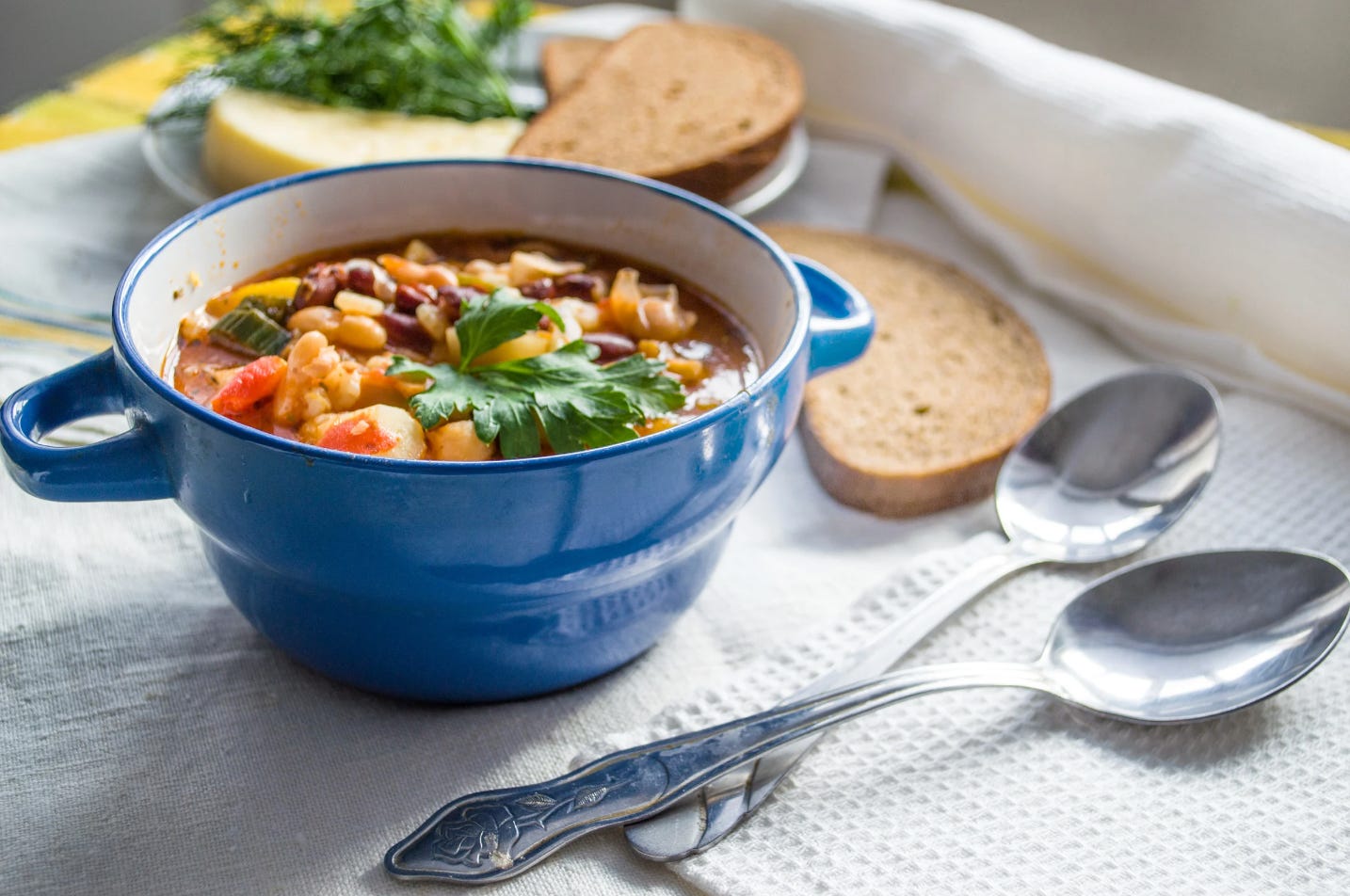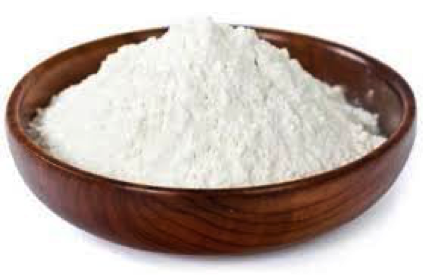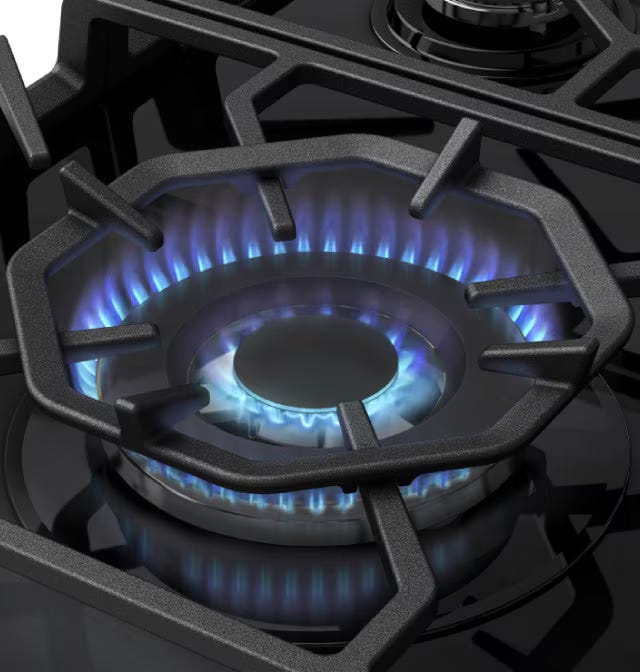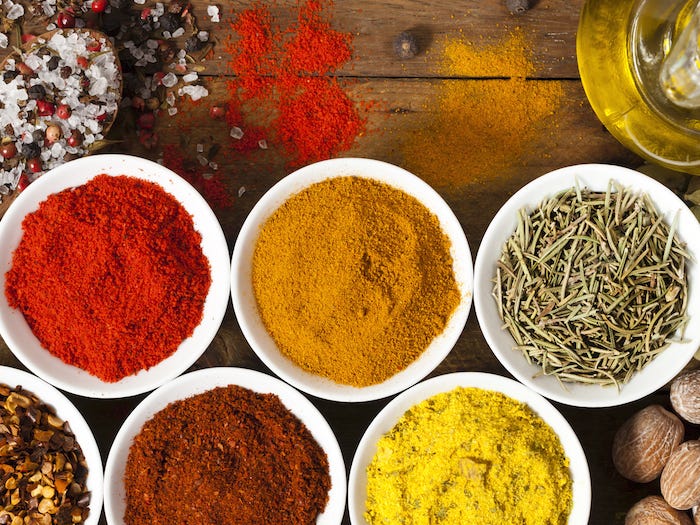 Gifts from the Sea on the Sonoma Coast
Gifts from the Sea on the Sonoma Coast
The Intentional Table
A Green Sea Anenome looking for a snack! In the culinary arts and herbal medicine worlds, sea vegetables have carved out a niche as versatile, nutrient-dense ingredients. Among the most celebrated are kombu and bladderwrack, two brown seaweed types stapled in traditional diets and remedies for centuries. 0715 @ Bodega Bay. = Heaven #IAMSOSPOILED because I live only 45 minutes from several beaches with an incredible abundance of seaweeds. I went yesterday and hand harvested about 20 pounds! The ones I love the most are Kombu, Bladderwrack, Nori, Sister Sarah, and Feather Boa. Yesterday,...
info_outline Arugula... it's a vegetable... right?
Arugula... it's a vegetable... right?
The Intentional Table
Arulgula…. it’s a vegetable! Click the Image above to hear it! Arugula Examining the Health Benefits and Nutrition of this Powerhouse Leafy Green Arugula was a valued green in ancient Rome, where it was celebrated in poetry and prose for its effects on mind and body. Unfortunately, it’s far less popular today than its cousins spinach and kale, even though arugula may be the healthiest green of all. In this article, we’ll look at the evidence for arugula’s health benefits and see if those ancient Romans were right to celebrate it. I know I shouldn’t do this because of...
info_outline Auto Immune Release Series Part 2
Auto Immune Release Series Part 2
The Intentional Table
Apple Blossoms @ Musea. Showy! Well, here it is, our second week of thoughts and inspirations about Auto-Immune conditions, how we all have a little of it going all the time, and what we can do about it. Spoiler alert: I am going to write about a plant-based diet this time. My hamburger loving self cringes. But remember that I said last time everything in moderation? Here is a good time to take a breath and remember that you do not have to go cold turkey on the turkey! Increase your intake of rainbow-colored fruits and vegetables. Consume more colorful fruits and vegetables to get as much...
info_outline Auto Immune Release Series Part 1
Auto Immune Release Series Part 1
The Intentional Table
Apricots Anyone? @ Musea What is an autoimmune disease? Why are we speaking about this, at length at the Intentional Table? Great questions! Let’s do this in reverse order. The why of this is life. We all know we are alive, as the machines that go ‘ping’ tell us when we are strapped in. But we also understand that there is way more to it than that. We are sometimes led to think that we are simply biological machines and that, like getting the oil in your car changed, you can go to the doctor if you live your life poorly, and they will ‘fix’ you. Then, out the door and on your...
info_outline Intentional Wellness from Musette
Intentional Wellness from Musette
The Intentional Table
Greetings all, How wonderful it is to speak to you through this simple platform. I wish we could all sit around the Intentional Table itself (mine or yours) and drink in the feeling of togetherness, which is the ‘why’ in the ‘what’ around here. I would like you to have a gift. It’s a preview of a book I am writing about Nutritional Wellness. It’s not a b…
info_outline I Taste, Therefore I Am...
I Taste, Therefore I Am...
The Intentional Table
At the Intentional Table, we taste. Do we ever! Every person who learns to eat, cook, or serve should also learn how to taste. Sounds easy, right? Not so fast, my dearest. Taste is an objective and a subjective thing! It’s objective because every person that is a person (despite a few unfortunate outliers) has taste buds built into the design. However, just because you have the hardware doesn't mean you have the software. If you do have the software, then you have an appreciation of fundamentals when it comes to how your organ of perception, which is your mouth, your tongue, your nose,...
info_outline Biodynamics Basics
Biodynamics Basics
The Intentional Table
Hello, my intrepid Intentional Table guests! Today, with our afternoon wine, will be the topic that is near and dear to our hearts here. Biodynamics. What is it, you may ask? Why is it important to this table, Musea, and our lives? All good questions. Read on, and if you want the DEEP DIVE EXTRA CREDIT, it’s at the bottom.⬇︎ There are two polar views of scientific reality when it comes to the consideration of the active practice of biodynamics. One is the left-brain approach, represented by the Newtonian Analytical view that has dominated science for the last two centuries. Newton...
info_outline February 4 is World Cancer Awareness Day
February 4 is World Cancer Awareness Day
The Intentional Table
Take a look at this team. They are really on it. Click the image for link. You may ask yourself, now, why would he say that? It certainly could apply to any human, anywhere. There are 340 activities around the world for Cancer Day. So, it must be happening, you know, out there somewhere. Hubris leads to nemesis. Cancer, hunger, war, disease, and crime all happen. It must happen because it’s all over the news. It’s hard to connect with anything like this while you read it on the device in your hand while it charges at Starbucks as you sip your mocha. Our children have never seen it. Our...
info_outline The Agony and The Ecstasy of the Table
The Agony and The Ecstasy of the Table
The Intentional Table
I thought I would take a few minutes to see if you would like to travel with me back in time to revisit exactly what the intentional table is and how it's considered here in our little conversation and in real life. If you asked me to cook for you, I would be delighted. That's all there is to it. I wouldn't question what our budget was, what the logistics were, or really what it was that you wanted to eat when you're with whom. All those things are in a particular way beside the point. What this means is that you're asking me to create with intention, something for you that actually serves...
info_outline Only the wounded eye can see
Only the wounded eye can see
The Intentional Table
I came up with this phrase while meditating yesterday. It was inspired by something my dear friend Andrew Johnstone told me recently. At the Intentional Table, we find ourselves circling back to an important theme with a recurring and increasing frequency: Gratitude. It's an incredibly overused, misused, and, I think, sometimes misleading term. Oxford says, “the quality of being thankful; readiness to show appreciation for and to return kindness.” In the latter part of that sentence is the key, which is ‘returning.’ There is an idea that we commonly refer to in Intentional...
info_outlineSoup is a staple food in virtually every national cuisine around the globe, and it's been around for longer than you might think. One of the first known forms of food preparation, ancient soup bowls dating from up to 20,000 B.C. have been found in China, with the dish originally made using heated rocks to create early forms of broth. As history tumbled on, more defined soup recipes started to form across Europe and Asia, while home cooks mastered the act of throwing a bunch of ingredients in a pot and making a delicious liquid-based meal from it — a practice that continues to this day.
Soup
/so͞op/ noun
1.
a liquid dish, typically made by boiling meat, fish, vegetables, etc., in stock or water.
"a bowl of tomato soup"
2.
a substance or mixture perceived to resemble soup in appearance or consistency.
"the waves and the water beyond have become a thick brown soup"
Soup is life. (I added this one for grins…)
What a bummer that its definition so incredibly limits its potency, possibilities, and endless variety. I personally think that soups are almost directly embedded into the emotional and somatic memories that every human has. Some of my fondest memories are having soup on various occasions. Not only all over the world but as a way of grounding and feeling more connected to people, places, or events.
So, at the Intentional Table today, it’s Soup Day! I once wrote a poem called "The Way to make coffee is to begin by capitalizing Coffee". You guessed it, it's about intention. It's about that often dramatic and incredible Journey a coffee being hast to take in order to fall into your cup and make you smile and then get to work. So today at the Intentional Table, I will call this: “The way to begin making soup is by capitalizing Soup.”
So, with such an incredible history and all we know about it, why is soup still so tricky to perfect? While it's not difficult to make a passable soup, too often, the homemade versions will have an underpowered flavor or be full of mushy and unsatisfying vegetables. There can also be a temptation to try and bolster the flavor of soup with salt or sodium-filled ingredients, leaving you with something less than dramatically delicious, and why, in the world, would you eat anything less than ‘dramatically delicious’? Come on….
You may even be saying to yourself, "I make a really good soup. What in the world is he talking about?" I am sure that that is absolutely true. None of the things here in this little stack that you read are meant to say that we do it better here or that you couldn't, shouldn't, or wouldn't be able to do it where you are. No. No. Hopefully, you'll find these arguably one-sided conversations helpful, instructive, and fun to read. You may have noticed that there's a big fat comment box as well, which you are absolutely able to use. As absolutely famous as I am, I do read everything that you comment on. 😌
So here are 14 (Yes, 14) things to think about when it comes to Soup.
1. Forgetting about your fats
Soup is often championed as a food that can be low in fat yet still delicious. While that can sometimes be the case, this can often lead to people skimping too much on the fat in their soups, leading to a flat and lifeless meal. Fat serves to activate our taste buds and somewhat works as a taste in itself, thereby serving to round out a meal's flavor and underlining the other notes in our food. This is true even when it comes to liquid-heavy meals like soup, where fat doesn't work so much as a lubricant as it does as a flavor addition.
Fat also contributes to a better mouthfeel in foods, and crucially, it can also have an effect on satiety, making meals keep you fuller for longer. The best part is that you can add fat at pretty much any stage of the cooking process with soup, and it will still have a positive effect on your meal. Add it at the beginning to sauté your vegetables properly, or finish your bowl off with a garnish of drizzled olive oil or a pat of butter. Doing this allows you to taste the full flavor of the fat and gives your soup an extra silkiness.
2. Not adding in a thickener
One of the greatest tragedies that we can think of is a soup that's too watery. And this can often happen if you're not thinking about how to thicken it. While soup can often be thickened simply by simmering it on the stove for long enough or by the ingredients in it releasing starch to provide body, oftentimes, this may not be enough and may result in you overcooking things. Adding a thickener to your soup, however, is a quick way to give it density without intensifying its flavor too much.
There are many easy ways to thicken your next soup, but our favorite method is using cornstarch or flour slurry. These starch-heavy ingredients serve to create bulk in your soup without changing its flavor. You can make an easy flour or cornstarch slurry by mixing a few teaspoons with water and then pouring it into the hot broth. This will prevent the dry ingredients from clumping together in your liquid. Try mixing in some coconut milk for a vegan thickener that adds fat and flavor. Alternatively, you could also blitz up some stale bread or mash up some boiled potatoes and stir them through for near-instant thickness.
3. Turning your heat up too high
🔥 Soups should ideally be cooked on a low simmer, but this, of course, takes time. And if you're in a hurry or are feeling hungry, the temptation can be to speed things up by turning up the heat. However, this is a surefire way to ruin your soup. Boiling your soup, instead of simmering it, will quickly cause your vegetables to overcook, making them mushy instead of tender. Any protein you add can also quickly toughen up and become dry when boiled due to the protein fibers constricting and pushing out the meat's juices.
Therefore, you should always simmer your soup on low heat, keeping it barely bubbling until it's ready to serve. Make sure to keep an eye on it, especially if you're cooking it with a lid on, as heat can quickly build up due to the trapped steam and moisture. You can also avoid your vegetables becoming overcooked by making sure everything is chopped to the same size. This will prevent some of them from cooking earlier than others and getting a ruined texture.
4. Forgetting to sauté your ingredients
As soup is cooked by throwing everything into a pot and simmering it, it can feel a bit pointless to brown your ingredients first. But fail to do so, and you'll end up with something ‘less than.’ Sautéeing vegetables and other ingredients before you add liquid is crucial for developing your food's flavor. Giving them access to direct dry heat through frying them allows the Maillard reaction to occur, giving all your ingredients a browned surface with a deeper flavor and unlocking sweet and savory flavor notes in vegetables like onions, peppers, and garlic.
Sautéeing vegetables also helps to keep them firm when they're subsequently simmered by locking in their crunchy texture. As well as this, sautéeing vegetables can also help to preserve their color. It's also a good way of ensuring that any fats that you're adding are well incorporated into your soup by coating your vegetables thoroughly when sautéeing instead of pouring them in afterward. And if you're using a thickener like flour, adding it in at the sautéeing stage can also prevent it from clumping up if it's thrown in later.
I am a huge fan of sauteing. In French, ' saute' means ‘to dance. ' This technique is characterized by high heat, a very small amount of oil, if any, and a short period of time.
5. Adding in your spices at the end
If you want to make soup like a chef, you're going to need some spices.
WAIT A MINUTE… LET'S TAKE A LOOK AT THAT LAST SENTENCE. So many places you will find this line. if you want to make ‘fill-in-the-blank’ like a chef… This is such a mockery of the word. Did you know that the word chef comes from the French military. Chef essentially is and equates to ‘manager.’ If you are in your own kitchen, you're the manager of that kitchen and therefore you are the chef. the only differentiation (according to famous Chef, Thomas Keller, in fact) between yourself, and a professional chef is that you have not been formally educated, in the chemistry of food, nor it service however, your intention, art form, and results are clearly, and only a precipitate of your desire and your acquired skill. If you have some skill and good ingredients, you, my friend, are a Chef. Let's just get busy with capitalizing Chef from now on too why don't we…
Spices, herbs, and other aromatics provide an irreplaceable element to soups, imbuing them with complexity and depth of flavor and preventing them from becoming bland. However, when exactly you add your spices is crucial, particularly if you're working with ground ones. If you're putting ground spices in at the end of the process, not only are you not giving them the time they need to unlock their flavors by releasing their natural oils, but you also run the risk of them clumping up in your broth.
Instead, you should always add your spices at the beginning of your cooking process. If you're using whole spices, throw them in as early as possible to give their flavors a chance to develop and the spices time to toast. Ground spices should always be added before you add your liquid, and give some time to fry. However, make sure you're not adding them too early. Because ground spices are pretty fine, they have a tendency to burn if exposed to dry heat for too long. It's best to mix them into your vegetables and protein a minute or two before adding your liquid.
6. Over-salting your soup
One of the worst things that can happen to a soup is it becoming too salty. Salt is, of course, a key flavor component of soup, and an ample amount is usually required to marry all of your ingredients together and stop your meal from being flat. But adding just one extra pinch can tip the balance and make your meal unpalatable. Soup can also quickly become too salty by adding extra ingredients that you're not using primarily for salt but which can contain high levels of sodium, like Worcestershire sauce, hot sauce, or spice mixes.
Unfortunately, the solution isn't as simple as just adding extra water, as this can throw the balance off for all of your other ingredients. Instead, you can fix over-salty soup with a simple potato hack. Raw potatoes, as well as other raw starchy vegetables, will absorb salt as they cook, essentially working as a sponge for excess sodium. Simply peel a potato and place it in your soup for about half an hour while on a gentle simmer before pulling it out. Make sure you do a taste test afterward to assess the seasoning levels and make any necessary adjustments.
7. Assuming you always need to use broth
Using a pre-made broth or stock, or one you've made from scratch, is a quick way to give soup loads of additional flavor. But if you've always assumed that you need it to make the best soup, you're mistaken. Soups can be just as delicious if you're using regular water as the base of your cooking liquid, and doing so allows for a more gently-flavored dish that contains the taste of your ingredients more fully.
Using water is also, of course, a big money-saver. While stock cubes don't cost much, fancied store-bought stocks and broths can be fairly pricey, And you may find that they don't actually add that much flavor at all. If you're making your own stock or broth, it can also turn what should be a relatively quick meal into something that takes hours to prepare. Additionally, relying on a store-bought broth or stock can result in you adding significant levels of salt to the soup as well as herb or spice combinations that you may not love for your chosen recipe, whereas using water allows you to control precisely how much salt you're putting into your meal.









